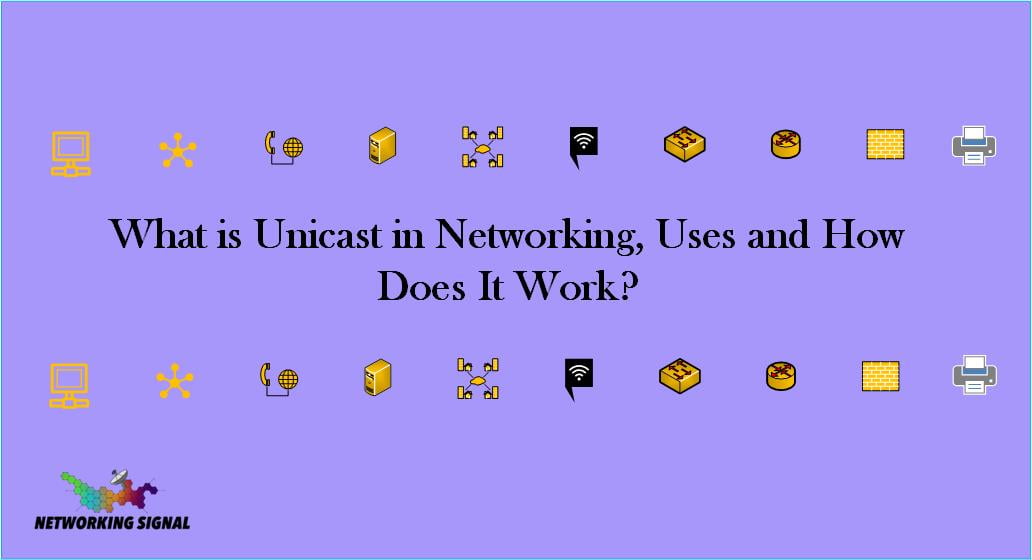What is Unicast in Networking?
In networking, unicast is a term used to describe a type of data communication where information is sent from one specific source to one specific destination. Unicast is often contrasted with multicast and broadcast, which are two other common types of data communication.
What are the Uses of Unicast?
Unicast is the most common type of data communication, and it is used for a wide variety of purposes. Some of the most common uses for unicast include:
- Sending an email from one person to another
- Downloading a file from the internet
- Streaming a video from YouTube
Example: When you browse the internet, your computer sends a unicast message to the server that hosts the website you are trying to access. The server then responds with a unicast message that contains the requested website.
How Does Unicast Work?

Unicast relies on a network of computers and other devices that are connected together using physical cables or wireless signals. When a unicast message is sent, it is routed through this network until it reaches the intended destination.
The process of routing unicast messages can be complex, and it often involves several different types of devices, including routers and switches. However, the end result is that the unicast message is delivered to the intended destination without being seen or intercepted by any other computers on the network.
What are the Advantages of Unicast?
There are several advantages associated with unicast, which is why it is so commonly used. Some of the biggest advantages of unicast include:
- Unicast is very reliable because the information is only sent to one specific destination. This means that there is no chance for the information to get lost or corrupted in transit.
- Unicast is very efficient because it eliminates the need to send information to multiple destinations (as is the case with multicast and broadcast).
- Unicast is very flexible because it can be used for a wide variety of purposes.
What are the Disadvantages of Unicast?
There are also some disadvantages associated with unicast, which include:
- Unicast can be slower than other types of data communication (such as multicast and broadcast) because it only sends information to one specific destination.
- Unicast can be less secure than other types of data communication because it is more difficult to encrypt and decrypt unicast data.
How Does Brocade Turn Off Unknow Unicast?
Brocade has a feature called “unknow unicast” which can be turned off. This feature is used to prevent the forwarding of unknown unicast traffic. When this feature is turned off, Brocade will not forward any unicast traffic that it does not recognize. This can help to improve security and performance on a network.
Relationship Between Unicast and Unicast Address
It is important to note that the term “unicast” can be used to describe both a type of data communication and a Unicast address. A Unicast address is a unique identifier that is assigned to a computer or other device that is connected to a network.
- Example: When you send a unicast message, the destination address of the message is a Unicast address. This Unicast address tells the network where to route the message so that it can be delivered to the intended recipient.

